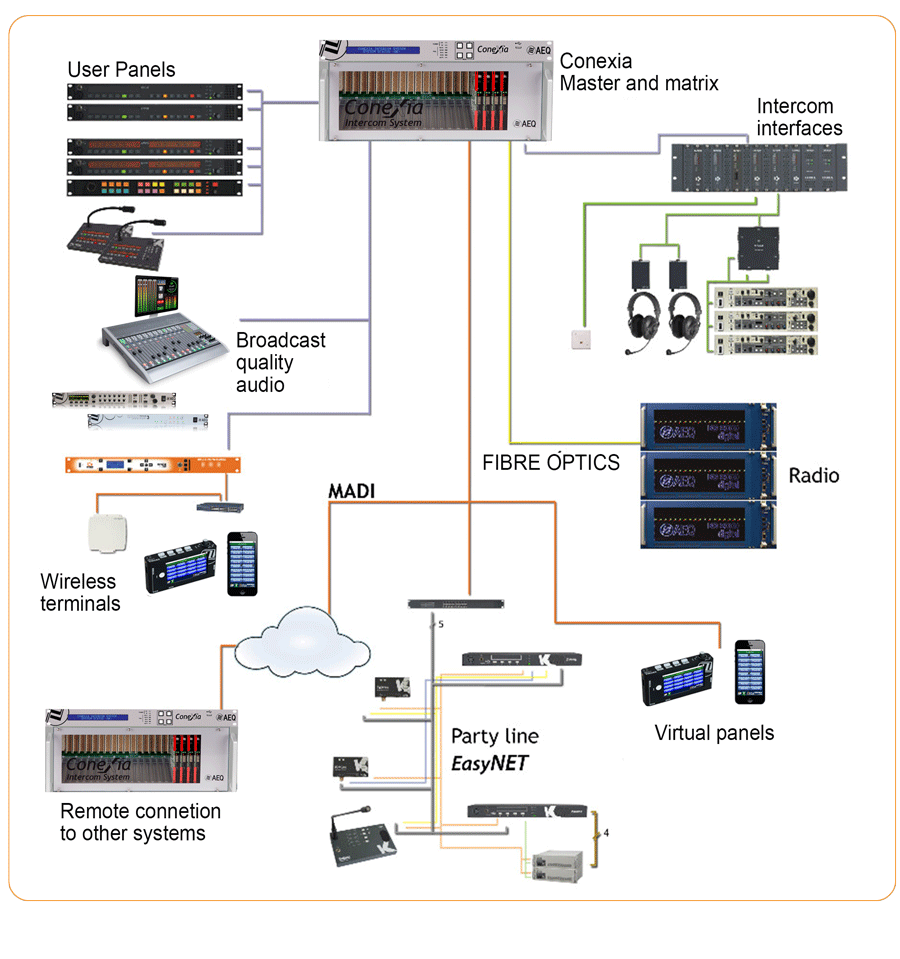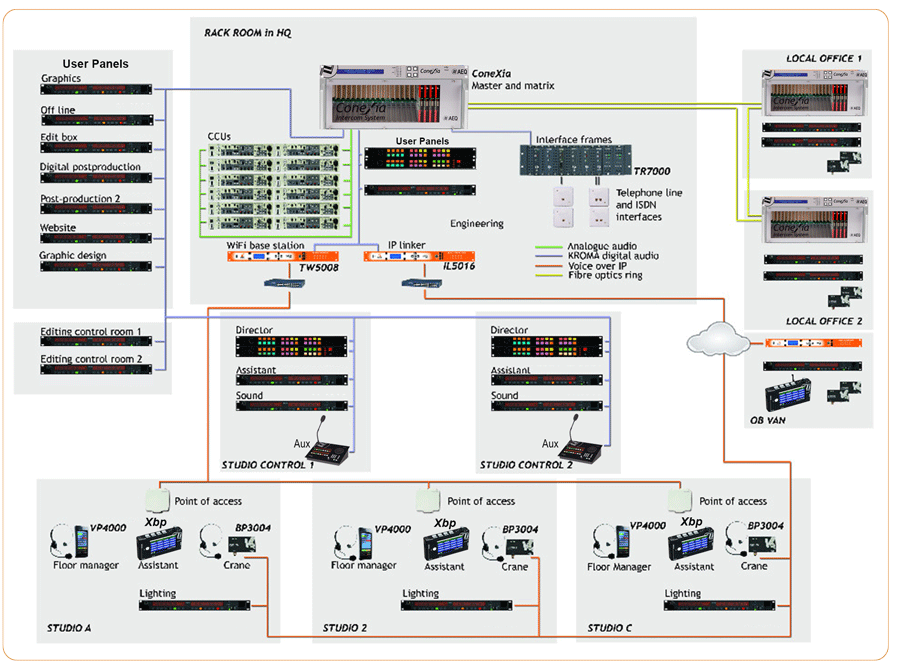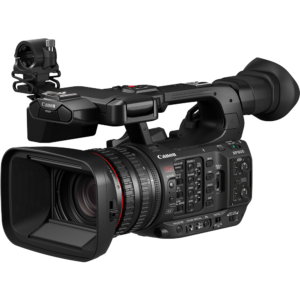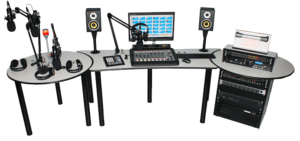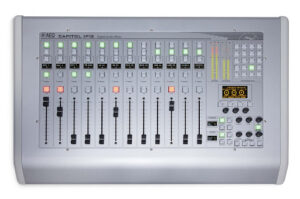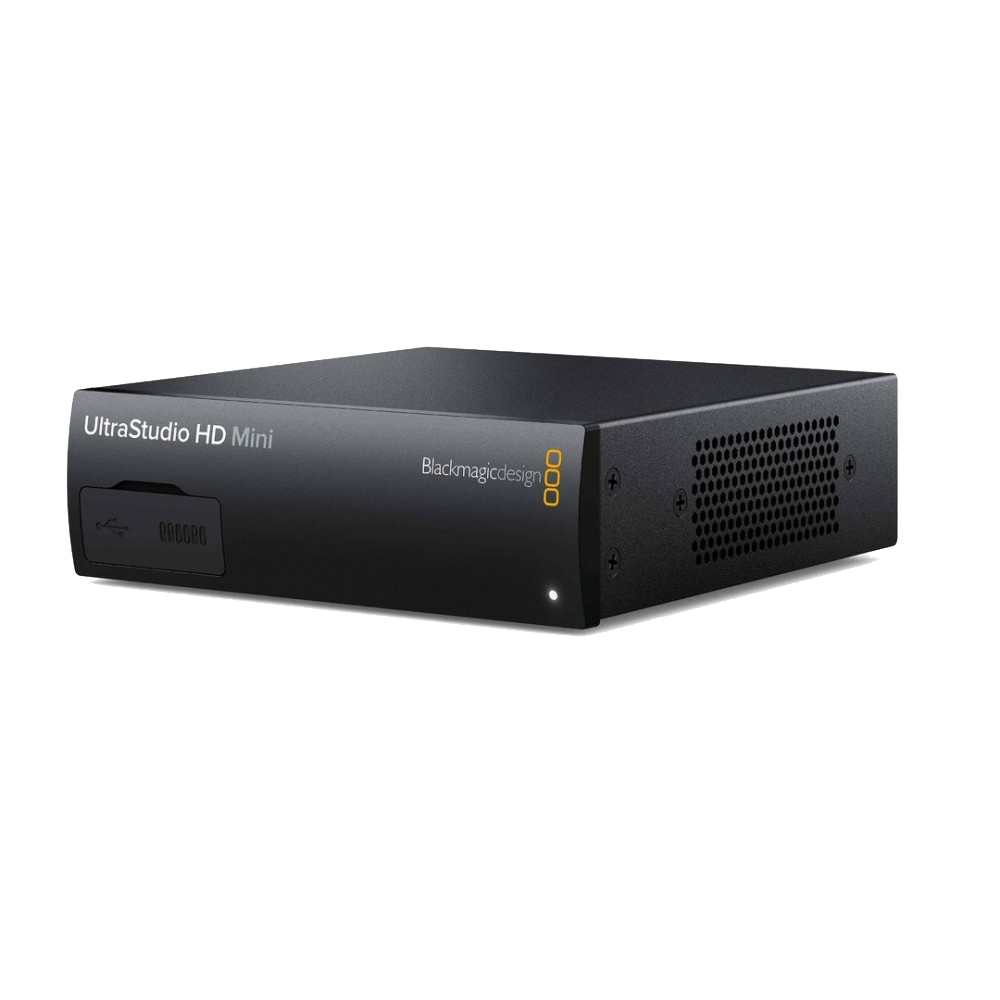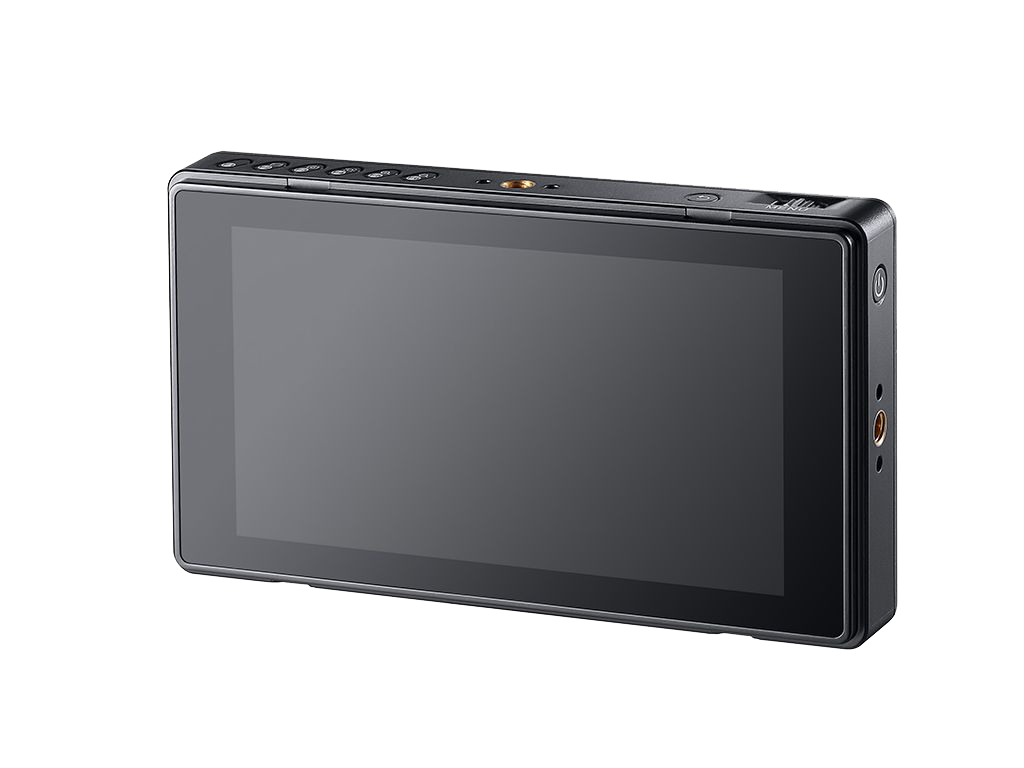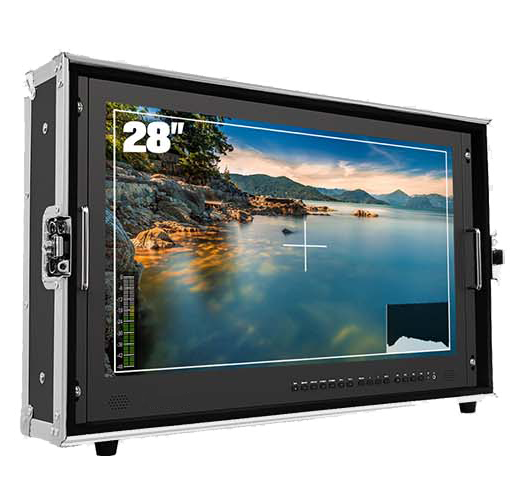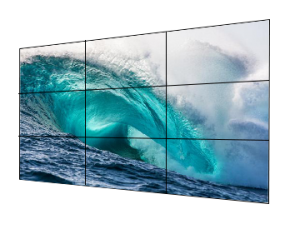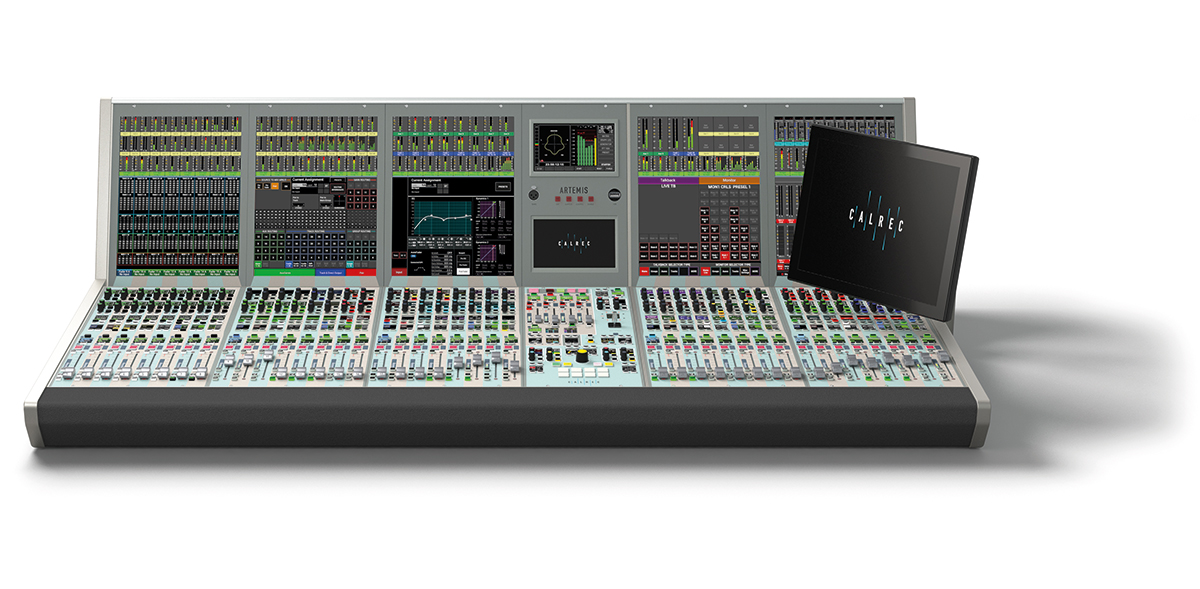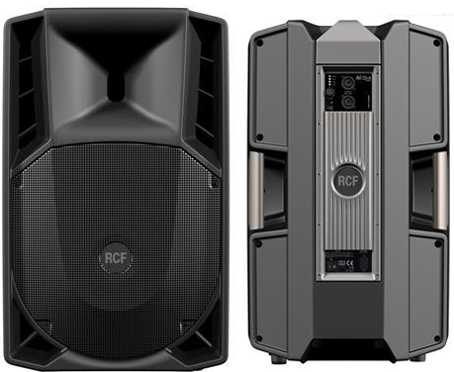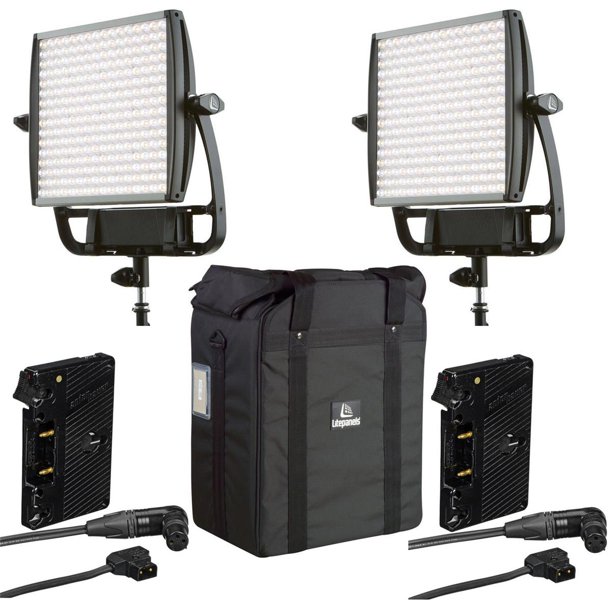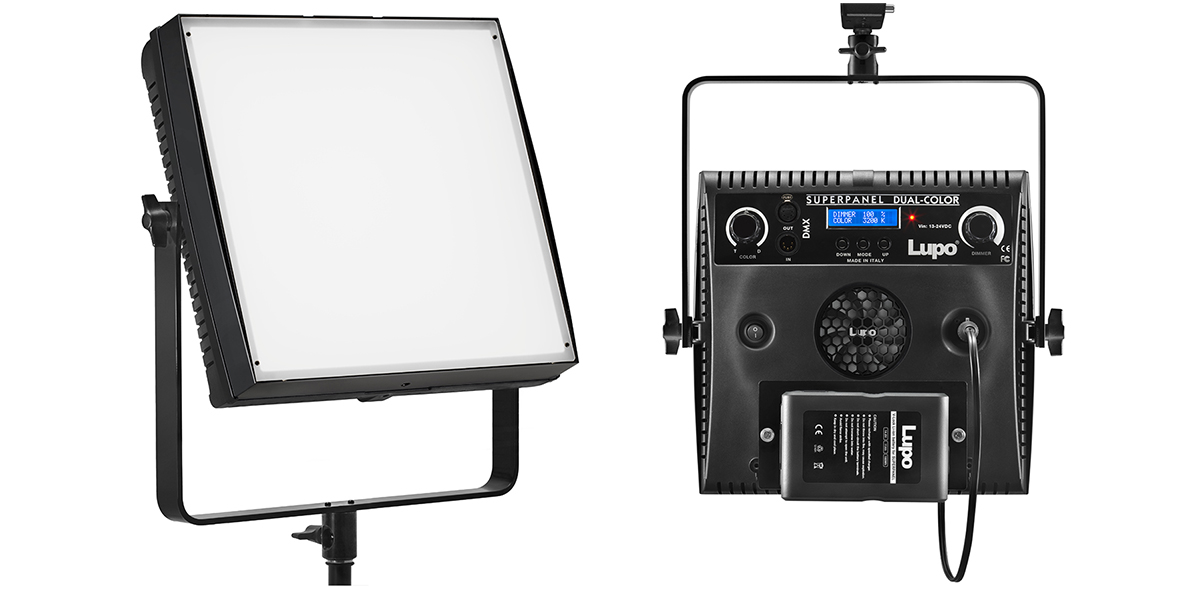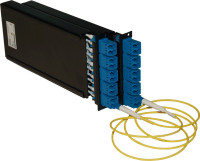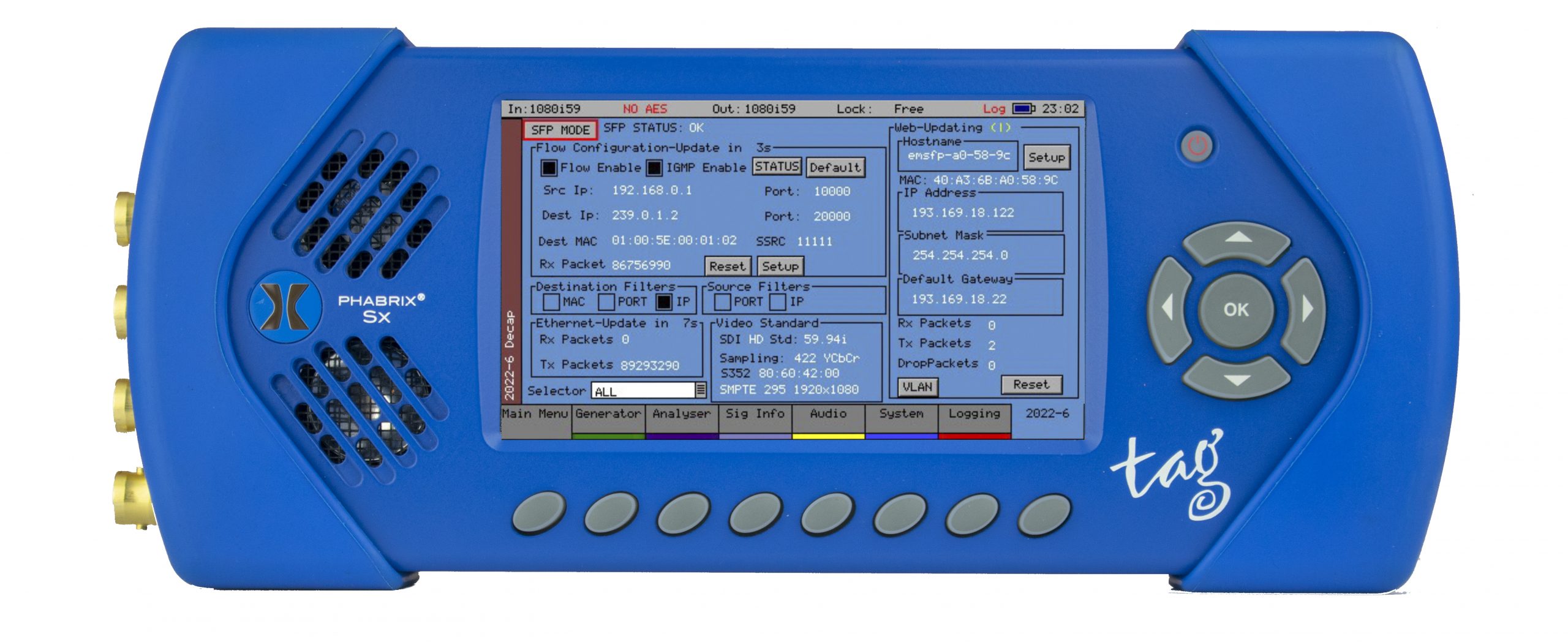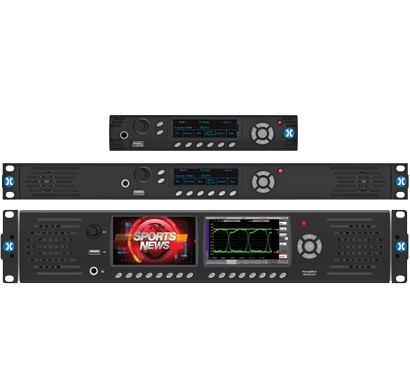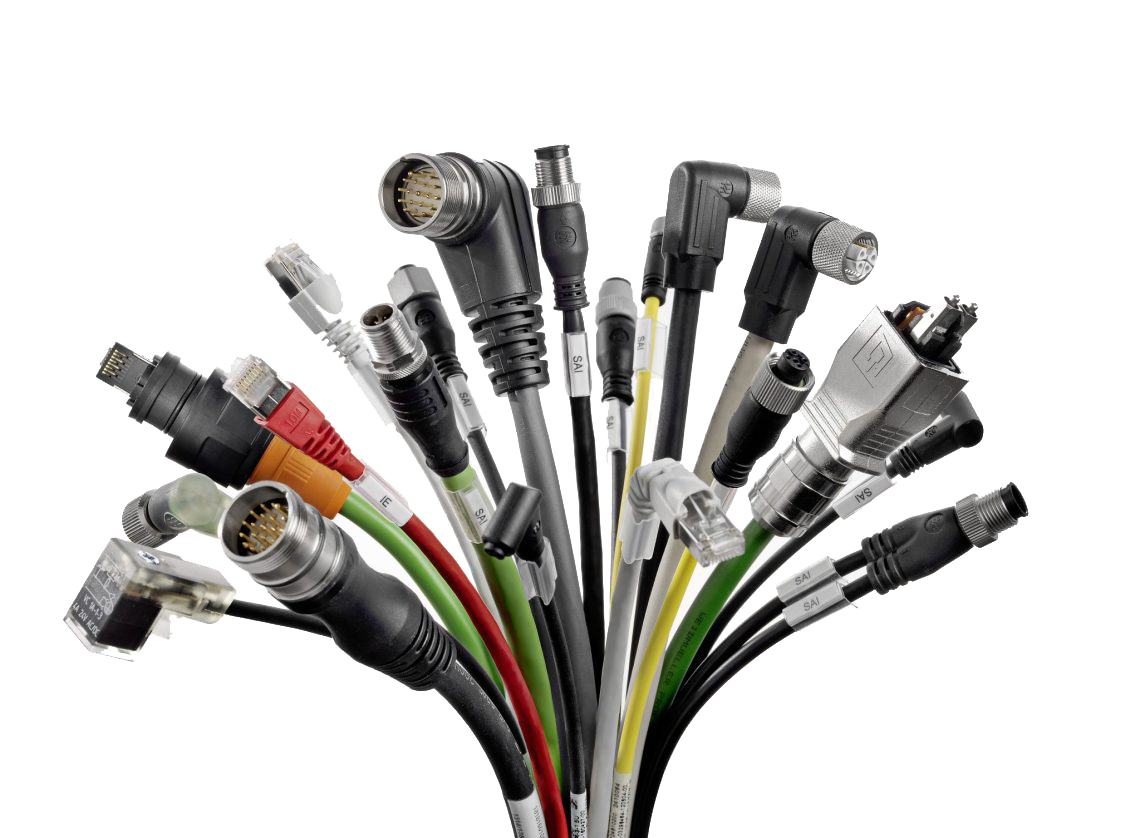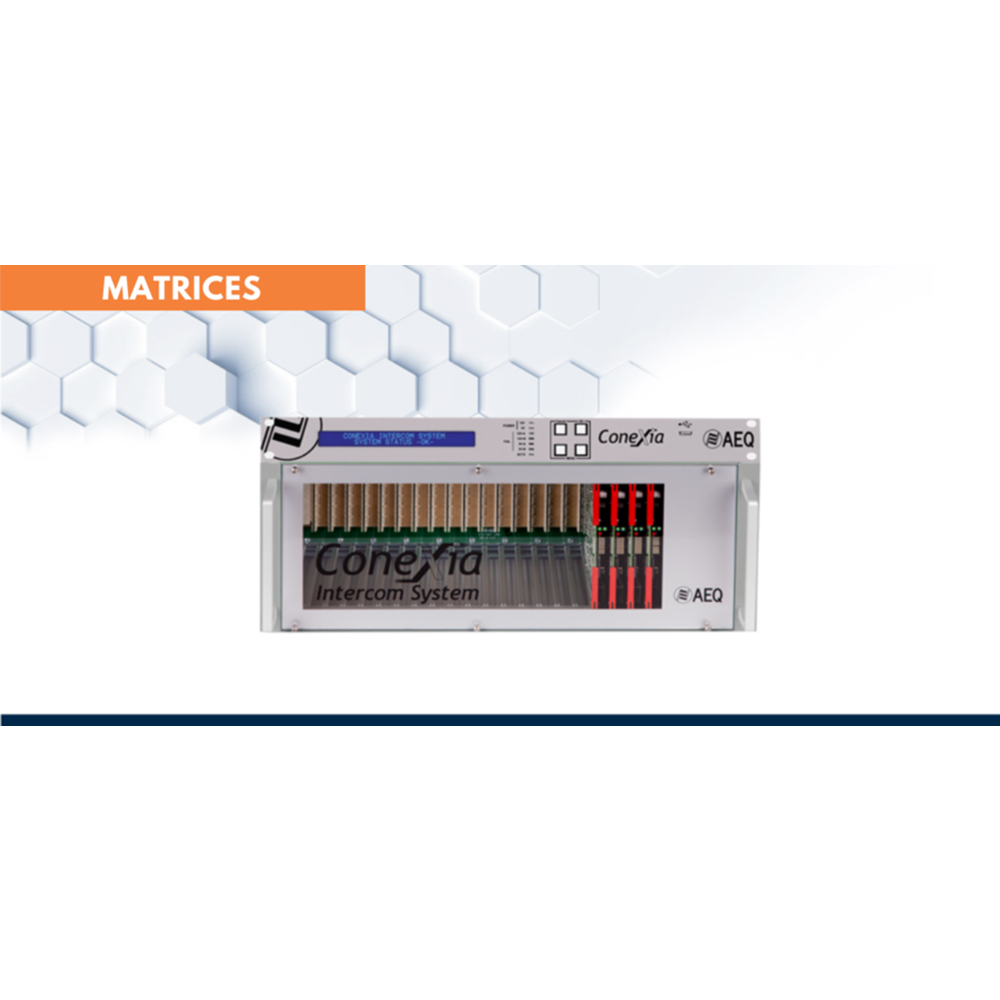Conexia
The ConeXia intercom system, developed by AEQ and KROMA Telecom, represents a leap forward and a new concept in regards to intercom systems as it becomes a global audio solution.
Based on a KROMA intercom master and an AEQ audio matrix, ConeXia has the capacity of up to 1024 x 1024 cross-points and is based upon a modular system of audio I/O cards.
But what really makes ConeXia special is the possibility to integrate intercom and broadcast audio sources into the same matrix, with 48 KHz 24 bits sampling and a 100% redundant system.
ConeXia is also compatible with all KROMA intercom panels, and expands the interface options with KROMA (telephone, GSM) and AEQ (MADI, fiber optics, IP, etc.) cards.
Two worlds, a single system
One of new ConeXia system’s main advantages is the possibility of integrating broadcast and intercom audio into the same matrix. The intercom system is benefiting from the broadcast audio quality and performance:
- 48 KHz – 24 bit sampling and processing
- AES/EBU audio ports
- 100% redundant matrix
- Multichannel audio interfaces
- Compatible with commentary unit
The fusion of both worlds allows you to integrate all the available audio sources and eliminates the need to manage two different and unrelated audio systems.
Unlimited connection interfaces
ConeXia provides all kinds of interfaces for terminal and matrix interconnection, implemented by means of cards that are installed into the main BC2000 frame or intercom interface frames TR7000 and TR5000. Among the multichannel audio interfaces, AES 10 MADI protocol is offered (through coax. or optical fiber), and 1024 channels proprietary protocol on optical fiber. It is also possible to integrate conventional or GSM calls in the system, or interconnect systems and terminals using ISDN lines o IP connections (LAN, WAN, etc.)
- BC2221 The DSP card is designed to carry out the audio setting and routing.
- BC2240 Master Controller module Redundancy, Ethernet and GPIO.
- BC2213 Optical Fiber Link module with 1,024 uncompressed audio channels.
- BC2210 Features a card for digital intercom slots.
- BC2224 A DANTETM – AES67 protocol multichannel AoIP card allows access to up to 64 audio channels.
- BC2219 VoIP multichannel audio card
- BC2312 AES10 MADI multichannel audio module with TX / RX.
- BC2209 Electronically-balanced analog input/output module.
- BC2202 AES/EBU digital input / output module.
- BC2203MH A module with 4 transformer-balanced inputs for microphones.
Wide range of terminals to choose
The wide variety of intercom terminals, together with the additional functions found in broadcast audio matrixes enable the design of very solid audio systems with up to 1024 audio sources, including:
- Rack-mounted and desktop user terminals.
- Wired or wireless beltpacks
- Virtual panels in PCs or Android / Apple devices
- Party-Line subsystems (EasyNET)
- CCU audio
- Microphone audio
- Mixing consoles
- Commentary positions
The interfaces for multichannel audio allow for the design of systems distributed among several venues and provide each system user with any of the audio channels available in the whole installation. The possibility to link matrixes and terminals using IP connections adds another option to the system design so it can be adapted to any possible situation.
Setting up crosspoints with Crossmapper
The Crossmapper PC software simplifies the installation of the system by means of an intuitive graphical interface. The user has simple access to the configuration of each terminal in the system, with different options for each key as well as additional functions such as groups, telephone dialing, IFBs, etc.
Once created, the map can be loaded in any of the 8 memory slots of the matrix via Ethernet or using the USB front port, and it can be activated without drop of the actual communications in a way that is transparent to the users. Crossmapper also allows the supervision of each communication and terminal at any moment, as well as query a comprehensive events register.
